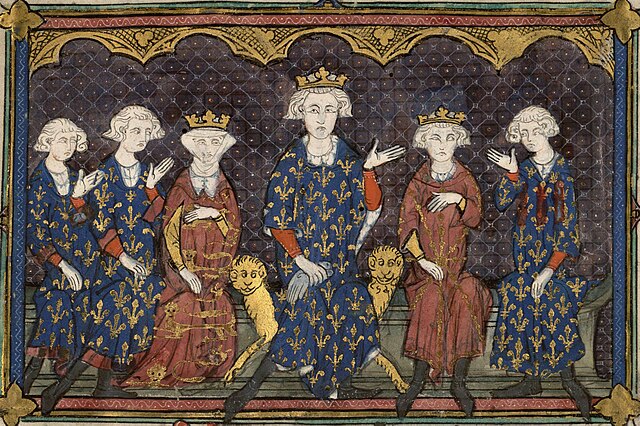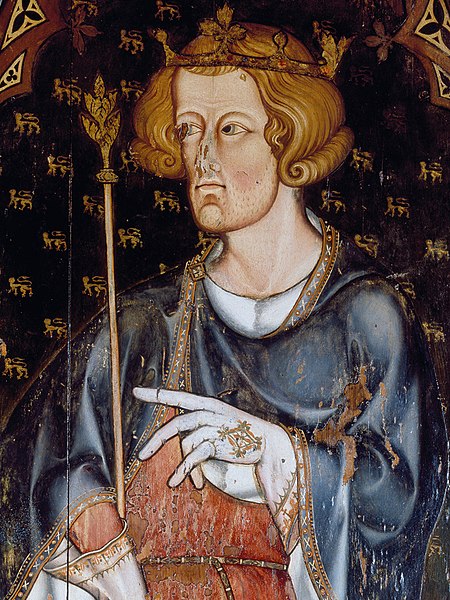Isabella of France, sometimes described as the She-Wolf of France, was Queen of England as the wife of King Edward II, and de facto regent of England from 1327 until 1330. She was the youngest surviving child and only surviving daughter of Philip IV of France and Joan I of Navarre. Isabella was notable in her lifetime for her diplomatic skills, intelligence, and beauty. She overthrew her husband, becoming a "femme fatale" figure in plays and literature over the years, usually portrayed as a beautiful but cruel and manipulative figure.
Isabella's French family, depicted in 1315: l-r: Isabella's brothers, Charles and Philip, Isabella herself, her father, Philip IV, her brother Louis, and her uncle, Charles of Valois. Bibliothèque nationale de France
Seal of Edward II
Isabella was able to come to an understanding with her husband's first favourite Piers Gaveston, shown here lying dead at the feet of Guy de Beauchamp, in a 15th-century representation.
Tynemouth Priory, seen from the North Sea, where Isabella sought shelter from the Scots army following the disastrous campaign of 1322
Edward II, also known as Edward of Caernarfon or Caernarvon, was King of England from 1307 until he was deposed in January 1327. The fourth son of Edward I, Edward became the heir to the throne following the death of his older brother Alphonso. Beginning in 1300, Edward accompanied his father on campaigns in Scotland, and in 1306 he was knighted in a grand ceremony at Westminster Abbey. Edward succeeded to the throne the next year, following his father's death. In 1308, he married Isabella of France, the daughter of the powerful King Philip IV, as part of a long-running effort to resolve the tensions between the English and French crowns.
Effigy in Gloucester Cathedral
Caernarfon Castle, Edward's birthplace
Portrait in Westminster Abbey, thought to be of Edward's father, Edward I
Early 14th-century depiction of Edward I (left) declaring his son Edward (right) the Prince of Wales








